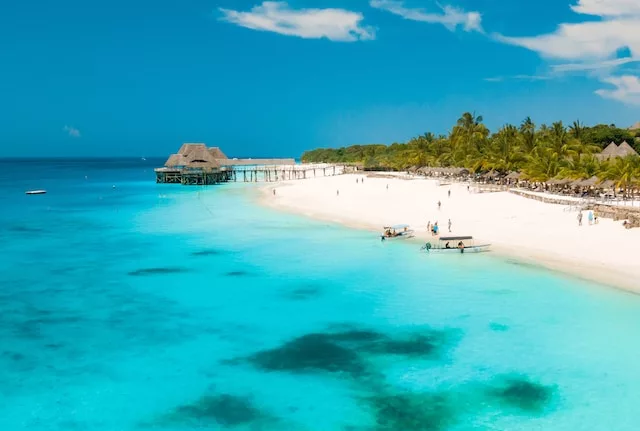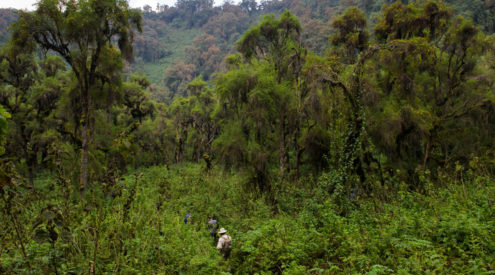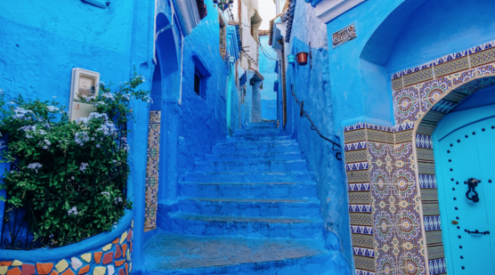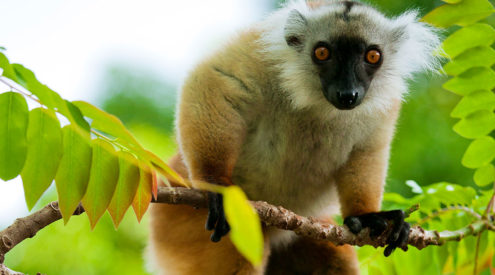ts primary export may be photographs of candy-coloured, gold-rimmed sunsets, but Dave Buchanan discovers that there’s more to Zanzibar than meets the eye
There wasn’t a moment to recover. We’d just dropped our luggage at the unassuming but excellent Al-Minar Hotel when Amir-the-guide arrived to take us on a walking tour of Stone Town, the ancient heart of Zanzibar City. Which is a must-do. It’s a fascinating place, filled with beauty and squalor and history.
A guide is a good idea, not so much to avoid getting lost (which you will – it’s a maze; but pretty safe to wander in), but because everything has a story. Like most guides we met, Amir was a fount of knowledge, with insightful answers to our questions.
Zanzibar’s history is too complex to go into here, but the usual suspects – slavery, colonialism, religion, greed, violence – are all there, and in some ways it’s remarkable that it’s peaceful now. Amir and others assured us that all races and creeds get along fine; but it’s only 50-odd years since the horrendous massacre of the Zanzibar Revolution. You have to wonder.
ALSO READ: Desert countries to visit: 5 things to do in Morocco
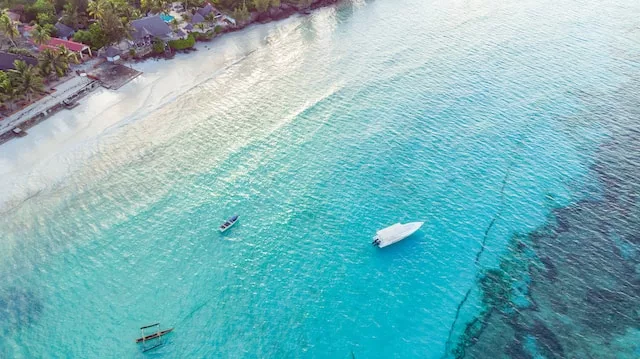
Today, mainland Tanzania is fairly balanced, religiously, but Zanzibar (known as the “African Hong Kong”, for its semi-autonomous existence) is 95% Muslim; tourists are greeted with the ubiquitous Swahili ‘Jambo!’ but if you get in first, ‘Salaam aleikum’ can go down well.
Stone Town suffers from lack of maintenance, and perhaps corruption; it’s crumbling slowly, and every year unscrupulous locals sell a few more of the famous carved wooden doors to unscrupulous foreigners.
But there’s still plenty to delight (the many doors that remain) and horrify (the fish market), in equal measure. Another delight was Amir’s passionate a cappella rendition of We Are The Champions, as we passed the childhood home of Stone Town’s most famous son, Freddie Mercury.
All of which meant we needed a beer and a sunset before tackling the Forodhani Gardens night food market. We were gratefully glugging cold Kilis on the deck of Stone Town’s Livingstone Beach Restaurant – our reward for the 23 hours we’d spent getting there – when I was struck by that first sunset. Little did I know that we could count on every subsequent evening rewarding us with more of the same.
It was at the market, just a few streets away, that the Spice Islands’ tumultuous back story came together in a sometimes surprising mix of cultures, flavours and imagination. Be wary of the seafood sosaties; some are fresher than others (tip: join the longest queue). But exciting in a good way are urojo (a thick mango and tamarind soup), sweet potato samosas, fresh sugarcane juice with lime and ginger, and pizza and crêpes unlike any you’ll find in New York or Paris – with exotic but delectable ingredient combinations that may include mayonnaise, atjar and egg, or “dessert” varieties containing chocolate, banana or Nutella.
Entertainment came courtesy of the Makachu divers, (mostly) teenage boys who fling themselves acrobatically off the harbour wall into alarmingly shallow water. One of many contradictions here: it’s great to watch but youngsters have been injured, paralysed, even killed trying to out-perform each other. There’s now an initiative in place to make it safer.
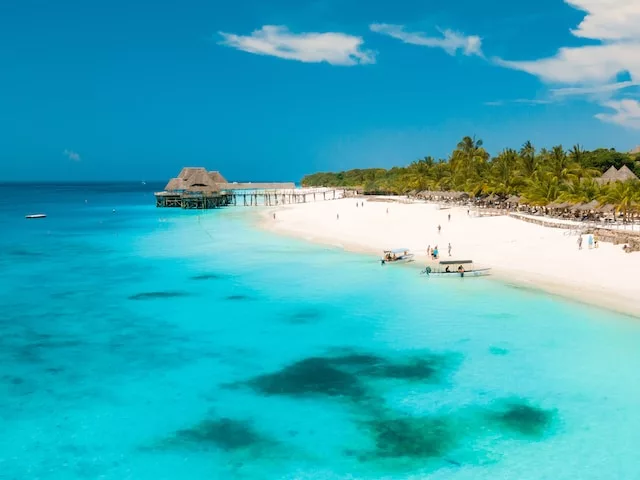
The next morning, a half-hour boat ride to Prison Island won out over a Spice Tour, though that’s said to be a good day out, too. Never used as a prison, Changuu (its “other” name) has as its main attraction a collection of Aldabra giant tortoises, a gift from the British governor of the Seychelles back in 1919. They are impressive creatures, and not called “giant” for nothing; adults average 250kg. Also on the island are dik diks (tiny antelope, a lot smaller than the tortoises), lizards and other wildlife. There’s also a small reef close by, in case you want to snorkel; ask your boatman.
Beach and beyond
If the traditional exotic-destination beach holiday is what you’re after, the northern end of Unguja (Zanzibar’s main island, and typically what people mean when they say “Zanzibar”) is a good bet, though the whole place is peppered with exquisite beaches. Kendwa has miles of perfect sand but felt a bit sterile; Nungwi, close by, is very touristy but more relaxed, casual. Despite being only 60km (halfway across the island) from Zanzibar City, congestion accounts for a 90-minute drive. But a Swahili phrase heard often is Pole pole – slow down, chill, what’s the hurry? (Another you might recognise is Hakuna matata. Thanks to Disney, you’ll hear that often, too.)
Nungwi village itself is an unprepossessing place, contrasting uncomfortably with the comparative luxury of the tourist accommodation right next door. Still, not everywhere is that “luxurious”, in First World terms; what you pay for is the privilege of living on perfect white sand, literally within metres of the warm, crystal-clear ocean.
And it is a privilege. Zanzibar averages a couple of degrees north or south of 30°C, all year round. That’s pretty doable; but in the wetter months, added humidity makes things less comfortable. Strolling into the sea – generally that Goldilocks temperature somewhere between “refreshing” and “bathwater” – several times a day is a pleasure. “Winter” is a good time to visit, too: temperatures in the high 20s, and dry, which sounds pretty good to chilly South Africans around July to September.
But don’t fall into the swim-laze-eat-swim trap (unless that’s exactly what you need). Bad examples abound: euro-rich tourists in too-small Speedos, burned black and bored, wearing a daily path between beach towel and bar. We came across a funeral for a fisherman who had drowned, and witnessed a tourist wandering through the crowd, taking pictures of the coffin. People really do lose their minds and their manners on vacation.
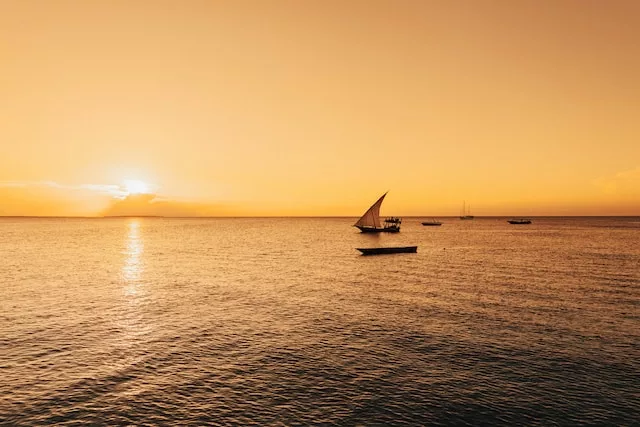
The countryside is there to explore, for one thing. A good tour to take is by buggy: small two-person, one-gear vehicles with high ground clearance, rudimentary suspension and whimsical steering. Again, the cheerful guide who led our ramshackle convoy was outstanding, and we stopped frequently for views, factoids and anecdotes.
Just outside Nungwi are the limestone and dolomite Tazari Caves, the most extensive in Zanzibar, and only rediscovered in 2013. Broken pottery and chains estimated to be hundreds of years old were found there; it’s thought they may have been a hideout for escaped slaves. Expect stalactites, stalagmites, crystals – and huge bats. Try not to stand in the cave entrance at sunset, when they all fly out… The cave system is small compared to Cango, say, but worth seeing, and a good change from the beach. And there’s a chameleon sanctuary next door.
After the bats and reptiles, you may need a beer and a sunset. Suitable sites in Nungwi are plentiful; most establishments have rooftop pubs or large decks. When you get hungry, seafood is the way to go – it’s plentiful, fresh (fishing boats are moored all along the coast) and delicious. If you crave well-made Western food or ice cream, you’re in luck; there’s a lot of Italian influence around. Remember that 80-odd years ago, nearby Somalia, Ethiopia and others were Italian colonies.
While gazing out to sea as you plough your way through your prawns, you might see horse riders on Nungwi beach. The Zanzibar Horse Club offers various rides and activities, including swimming with horses. (Sometimes you’ll also see cows on the beach. Don’t try to swim with them.) The club also runs an Appaloosa breeding programme and a horse and donkey sanctuary. On one occasion, we saw a horse with saddle walking on the beach on its own. Two minutes later, the rest of the riding group came into view – including one rider dejectedly walking. Ask for a horse that matches your abilities!
Maasai dreaming
There’s another common but unusual sight on the beach: Maasai warriors from northern Tanzania, tall and muscular, fully kitted out with bright traditional robes and intimidating weaponry… and Ray-Bans and a cellphone.
In the 1990s, lack of opportunity at home brought young Maasai to Dar es Salaam, where they quickly found employment as security guards; they were brave, highly moral, and tended to stick together, so it was difficult to corrupt them. The practice became popular, and spread. Now, sadly, not all are as admirable; it’s said that some are not even real Maasai.
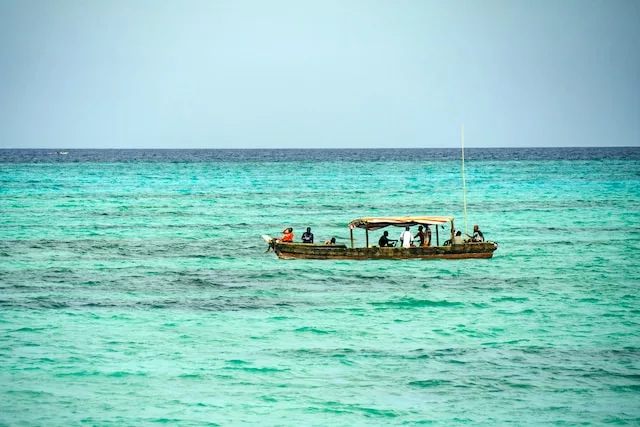
A short walk of your own down the beach will bring you to the Mnarani Marine Turtles Conservation Pond, where rescued turtles are rehabilitated, hatchlings are raised (and released once a year, in February), and you can feed the adults
One of the more famous attractions of Zanzibar is diving and snorkelling, and for good reason. The diversity of sea life is marvellous, as is the clarity of the water, and there are many operators who will take you to nearby reefs and islands to explore. Reef health is concerning, and there’s a concerted move to preserve the coral that’s there; as with many issues, local opinion is divided on how successful it’s been.
If you’re feeling indulgent (and this is undoubtedly the place for it), a good way to see the sea is to join a group on a catamaran or dhow day trip. It was pricey, but all our drinks, food (cooked fresh on board, and delicious) and snorkelling equipment was included, and the easygoing crew knew the best spots to drop anchor. On our way to one destination (just off a private island, rumoured to be part-owned by Bill Gates), we were joined by a pod of dolphins swimming joyously under and around our yacht. The colourful fish and coral we swam among later were just the cherry on top.
Worth it? Oh yes. Zanzibar has its problems, like everywhere else. But travel with integrity, embrace the unexpected, and take it slowly – pole pole – and you’ll get home relaxed and richer for it. And with more sunset photos than any sane person needs.
What to do in Zanzibar
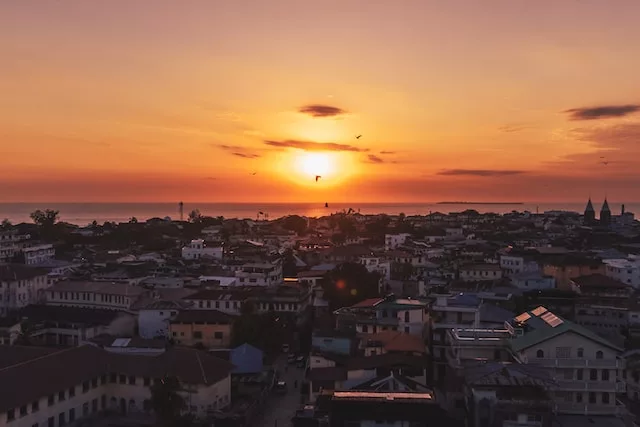
Stone Town
You won’t want to miss a guided walking tour of Zanzibar City’s historic heart. Plan in advance by emailing [email protected]. He charges $20.
+255 717 017 859; WhatsApp +255 776 068 531
Prison Island
The boat ride with Yussuf (+255 777 861 188) will cost upwards of $10 depending on how many people are travelling. Island entrance is $4.
Buggies
There are a number of options. We did the Adventure Tour, which involved visiting beaches, a farm, a village and other sites of interest, on- and off-road. It costs $60 each for three to four hours.
+255 777 114 030
zanzibuggy.com
Tazari Caves
They’re near Tazari Village just outside Nungwi. A good tip is to take your own torch (theirs are a bit feeble), and be prepared for the heat. Entry is $10, and it’s another $10 for the chameleon sanctuary.
+255 717 300 704
Facebook: Tazari Caves
Horse riding
Zanzibar Horse Club is located behind the Z Hotel in Nungwi. Rides from $40.
Mnarani Marine Turtles Conservation Pond
Not to be confused with Baraka Natural Aquarium, which is solely commercial, this is the real deal; they charge $10.
+255 773 204 320
Facebook: Mnarani Marine Turtles Conservation Pond
Scuba
East Africa Diving in Nungwi is professional, friendly and accommodating. Dives from $125 for two people (or cheaper per person if there are more of you). Padi courses from $150.
+255 777 416 425
Catamaran day trips
Zanzibar Watersports in Kendwa charges upwards of $800.
+255 777 415 660
Ringos
Basically, being towed behind a boat on a jazzed-up tractor inner tube. Pricey but fun, and you can tell the operator how extreme (or soporific) you want the ride to be. Nungwi Extreme Parasailing & Watersports charges $60 for three people for about 20 minutes.
+255 629 987 373
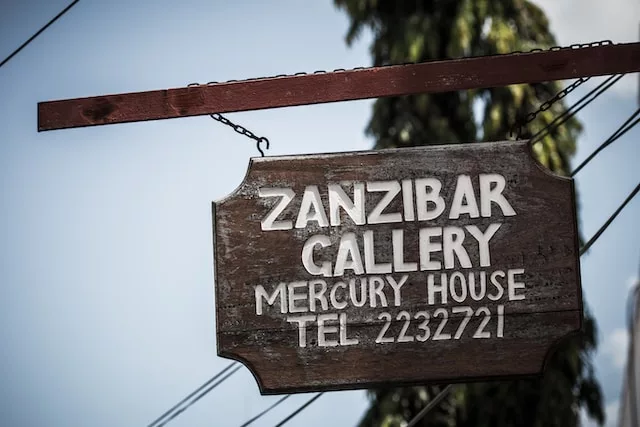
Zanzi facts
- Zanzibar was once the world’s biggest producer of cloves, which are still the island’s single major cash crop.
- Zanzibar is actually a group of islands, including the two large, main ones – Unguja and Pemba.
- On 27 August 1896, Stone Town witnessed the shortest war in recorded history. The Anglo-Zanzibar War, between the UK and the Zanzibar Sultanate, lasted between 38 and 45 minutes.
- One of the Aldabra giant tortoises on Prison Island is thought to be more than 200 years old, and several are over 150. They have a resting heart rate of six beats a minute, which may explain their longevity.
- Farouk Bulsara, born here in 1946, is undoubtedly the most famous person to claim Zanzibari heritage. The world knew him as Freddie Mercury.
- In 1973, Zanzibar introduced colour television – the first place in Africa to do so.
- Zanzibar’s Jozani Forest is known for its rare red colobus monkeys, but at one time it was also home to the Zanzibar leopard, now presumed extinct. The cats are said to have been brought over from mainland Tanzania for the amusement of the Sultan of Zanzibar, who kept them in the palace until they grew too ferocious and were released into the wild and then later hunted out of existence.
Zanzibar Lodgings
Al-Minar Hotel
Comfortable, good value, close to everything in Stone Town. And manager Santosh is a chilled, ever-obliging gem.
From R880 per room pn
+255 242 230 457
ZaVa Nungwi Hotel
In Nungwi, this unassuming inn has a good restaurant, helpful staff and is right on the beach.
From R1 760 pps pn
+255 655 469 837
By Dave Buchanan
A version of this article originally appeared in the July 2022 print issue of Getaway
Follow us on social media for more travel news, inspiration, and guides. You can also tag us to be featured.
TikTok | Instagram | Facebook | Twitter
ALSO READ: Spend 48 hours exploring Kaapschehoop, Mpumalanga









